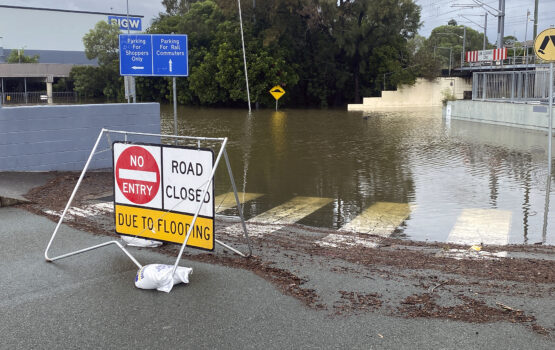NSW Strata Law Changes 2025
Effective 27 October 2025, significant NSW strata law changes 2025 will come into force, impacting owners corporations, strata managers, building managers, and developers. These reforms are designed to enhance transparency, accountability, and fairness in strata schemes, while also giving regulators expanded enforcement powers.
With updates ranging from levy notices and hardship payment plans to building manager duties and Tribunal powers, the upcoming reforms are more than procedural tweaks; they will influence daily operations for all stakeholders involved in strata governance. Understanding the implications and taking proactive steps now will help schemes stay compliant, reduce risk, and prepare for the next tranche of reforms in 2026.
The strata reforms 27 October 2025, focus on key areas including financial management, dispute resolution, and operational accountability. At the heart of these changes are obligations around NSW building manager duties 2025, levy notices, hardship procedures, and enhanced investigative powers for NSW Fair Trading strata enforcement.
Summary of Key Changes
| Area of change | Key changes (from 27 Oct 2025) |
|---|---|
| Building manager governance |
|
| Financial obligations & levies |
|
| Compliance & enforcement |
|
| Dispute resolution (NCAT) |
|
Clarifying the Role and New Duties of Building Managers
The 27 October 2025 reforms introduce several practical and legal adjustments that affect day-to-day strata operations. One of the most notable areas is the role of building managers. Under the new rules, building managers must meet clarified standards of conduct and accountability.
NSW building manager duties 2025 now explicitly require managers to ensure the safety of common property, oversee repairs and maintenance, act in the best interests of the owners corporation, and disclose any benefits received in relation to their role. These obligations are designed to prevent conflicts of interest and improve transparency, and they may require existing management agreements to be reviewed and updated.
Do Levy Notices Need a Hardship Statement in NSW?
Another significant area is the management of financial obligations. Levy notices will now need to include a Financial Hardship Information Statement. This ensures that owners are informed of their rights if they encounter difficulties in paying levies.
How Do Strata Payment Plans Work in NSW?
Additionally, the reforms introduce a standard form for NSW strata levy payment plans, enabling owners to apply for structured payment arrangements for overdue levies. Committees must adopt fair processes to manage these requests, including documenting approvals and maintaining clear records of payment agreements.
Tribunal Orders and Enforcement Powers
NSW Fair Trading will begin using new investigative and enforcement powers to help ensure owners corporations meet their legal duty to repair and maintain common property. The reforms expand the ability of owners corporations to seek Tribunal orders to vary or terminate building or strata management agreements. This mechanism provides committees with a formal path to address underperformance or non-compliance by managers or contractors. Coupled with these powers are new obligations around reporting, documentation, and record retention to ensure compliance in the event of inspections or investigations.
Finally, enforcement powers for NSW Fair Trading strata enforcement have been strengthened. Fair Trading can now require documents, demand written answers, enter premises, and take further steps, including issuing compliance notices or enforceable undertakings.
These expanded powers highlight the importance of accurate record-keeping for common property maintenance, safety inspections, and contract management.
Immediate Actions for Committees and Managers
To comply with the NSW strata law changes 2025, committees and managers should take several immediate actions before 27 October 2025.
-
First, all levy notice templates must be updated to include the mandatory Financial Hardship Information Statement. By incorporating this statement, committees ensure that owners are informed of their rights and options for payment assistance.
-
Second, adopting the standard NSW strata levy payment plans form is essential. Managers should review current arrears and prepare a process for owners to apply for structured payment plans. Clear documentation, including approval workflows and reporting mechanisms, will help committees demonstrate fairness and compliance.
-
Third, management agreements should be audited to confirm that they meet the new definitions and obligations regarding building managers. Any necessary amendments should be negotiated and documented before the reforms commence, minimising potential disputes.
-
Fourth, maintenance and repair workflows should be reviewed. This includes confirming that safety inspections, repair records, and contractor oversight are in line with the clarified duties under NSW building manager duties 2025. Maintaining detailed records now reduces the risk of enforcement actions under the expanded NSW Fair Trading strata enforcement powers.
-
Finally, committees should set regular reporting cadences and confirm document retention policies. Reports on levies, payment plans, maintenance, and safety compliance should be accessible for inspections and internal audits. These steps will position schemes to meet legal obligations confidently and efficiently.
MJ Engineering Projects can support these immediate actions through superintendent oversight, contractor-neutral procurement, and DBPA-aligned documentation.
How to prepare for NSW strata reforms 2026
While the October 2025 changes are significant, additional reforms are scheduled for early 2026. Among the anticipated updates are new requirements for capital works fund planning, updated reporting obligations for developers, and enhanced documentation for Section 184 certificates. Preparing for these reforms now is prudent. Committees should begin reviewing capital works schedules, auditing existing contracts, and updating recordkeeping practices to ensure that information is complete and readily available.
Early adoption of best practices now, including detailed reporting, superintendent oversight, and proactive contract management, reduces the likelihood of enforcement issues later.
Final Words
The strata reforms 27 October 2025 present both challenges and opportunities for owners corporations, building managers, and developers. By understanding the new NSW strata law changes 2025, updating levy notices, adopting payment plan forms, reviewing management agreements, and strengthening recordkeeping, schemes can meet their legal obligations and foster transparency and fairness.
MJ Engineering Projects supports clients throughout these reforms, offering remedial engineering, superintendent services, and DBPA-aligned documentation.
With structured oversight, clear reporting, and site presence, we help schemes manage compliance risks and meet deadlines with confidence. For guidance on audits, levy management, or superintendent services, contact us to ensure your strata scheme is fully prepared for the October 2025 changes and beyond.
Disclaimer: This article provides general information only and is not legal advice. Seek specific advice for your scheme.




